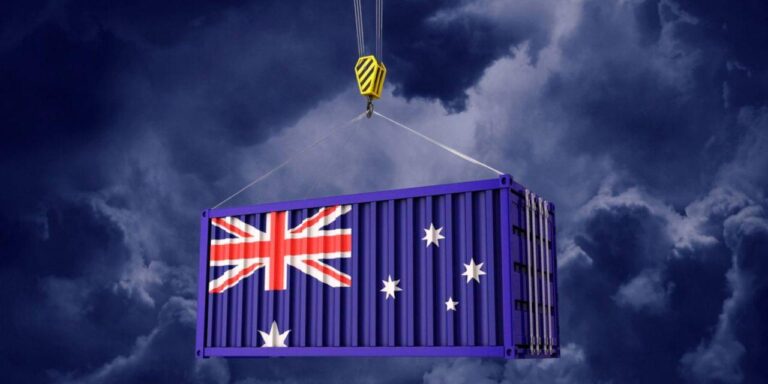Australia remains a key player in the global trade landscape, leveraging its abundant natural resources and strategic location in the Asia-Pacific region. According to data from The Observatory of Economic Complexity, the nation’s exports and imports reveal dynamic patterns shaped by evolving economic partnerships and shifting market demands. This article delves into Australia’s trade profile, highlighting its major export commodities, import trends, and principal trade partners that drive its economic growth and influence on the world stage.
Australia’s Leading Export Commodities and Their Impact on the Global Market
Australia’s export landscape is dominated by a diverse array of commodities that not only bolster its economy but also significantly influence global markets. At the forefront are iron ore, coal, and natural gas, which form the backbone of Australia’s trade portfolio. These raw materials feed the industrial machinery of countries like China, Japan, and South Korea, making Australia a vital supplier in the Asia-Pacific region. Additionally, agricultural goods such as wheat, beef, and wool underscore the country’s strength in food exports, catering to growing demand in Southeast Asia and the Middle East. Australia’s ability to consistently deliver high-quality commodities positions it as a key player in stabilizing prices and supply chains worldwide.
The ripple effects of Australia’s export commodities extend beyond raw material supply, shaping global trade dynamics and commodity markets. Fluctuations in Australia’s production volumes or export policies can lead to shifts in global pricing, affecting everything from metal markets to energy costs. This influence is compounded by Australia’s strategic trade partnerships, which enhance market access and foster economic interdependence. Below is a snapshot of Australia’s top export commodities and their estimated share of total exports:
| Commodity | Percentage of Total Exports | Primary Importers |
|---|---|---|
| Iron Ore | 35% | China, Japan |
| Coal | 20% | India, South Korea |
| Natural Gas | 15% | Japan, China, South Korea |
| Wheat | 7% | Indonesia, Egypt |
| Beef | 5% | United States, Japan |
Key Import Trends Shaping Australia’s Economic Landscape
Australia’s import landscape is rapidly evolving, driven by shifts in global supply chains and the intensifying demand for technology and energy-related goods. Recent trends highlight a growing dependency on imports from Asian economies, notably China, Japan, and South Korea, which supply a large share of electronics, machinery, and refined petroleum products. This reliance reflects Australia’s strategy to fuel domestic industries and meet consumer needs amid fluctuating commodity prices and geopolitical uncertainties.
The diversification of import sources is becoming a critical priority to mitigate risks associated with over-concentration. Key categories exhibiting significant growth include:
- Advanced electronic components and semiconductors
- Renewable energy technologies and equipment
- Pharmaceuticals and medical devices
- Automotive parts and industrial machinery
| Top Import Categories | Annual Value (AUD billions) | Major Trade Partners |
|---|---|---|
| Electronics & Semiconductors | 25.4 | China, South Korea, Japan |
| Energy Equipment | 14.2 | United States, Germany |
| Pharmaceuticals | 8.7 | Switzerland, United States |
| Automotive Parts | 7.6 | Japan, Thailand |
Strategic Recommendations for Enhancing Trade Relationships and Diversifying Partners
To strengthen Australia’s trade landscape, policymakers should prioritize collaborative endeavors that deepen existing relationships while exploring emerging markets. Emphasizing innovation in sectors such as renewable energy, advanced manufacturing, and digital services can position Australia as a vital partner for the Asia-Pacific region and beyond. Building trade agreements that incorporate sustainability standards and technology transfer not only enhance economic resilience but also align Australian exports with global demands for responsible commerce.
Furthermore, broadening the base of trade partners is essential to reduce overreliance on dominant economies. Strategic outreach initiatives targeting small and medium-sized economies in Africa, Latin America, and Southeast Asia could open new avenues for diversified trade networks. Key recommendations include:
- Establishing bilateral forums focused on sector-specific collaboration and market intelligence sharing.
- Supporting export diversification programs for local businesses by facilitating access to international standards and certifications.
- Investing in logistics infrastructure that eases market access and reduces operational costs.
- Developing a robust digital trade framework to streamline cross-border e-commerce and compliance.
| Target Region | Priority Sector | Potential Trade Growth (%) |
|---|---|---|
| ASEAN | Renewable Energy | 18 |
| Latin America | Agri-Technology | 15 |
| Africa | Mining Equipment | 12 |
| Europe | Digital Services | 10 |
Concluding Remarks
In summary, Australia’s trade landscape presents a dynamic interplay of key export commodities and strategic import partnerships, underscoring its vital role in the global economy. As highlighted by data from The Observatory of Economic Complexity, the nation’s economic growth remains closely tied to its ability to navigate shifting demand and supply patterns across diverse markets. Moving forward, policymakers and businesses alike will need to monitor evolving trade relationships to sustain Australia’s competitive edge on the international stage.




